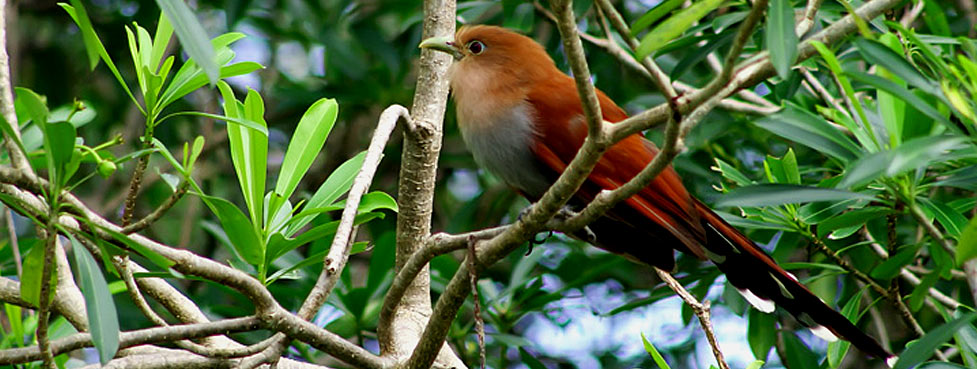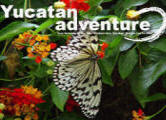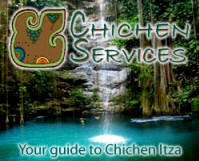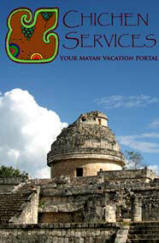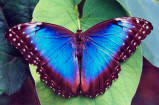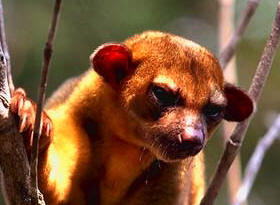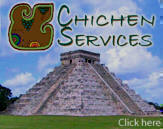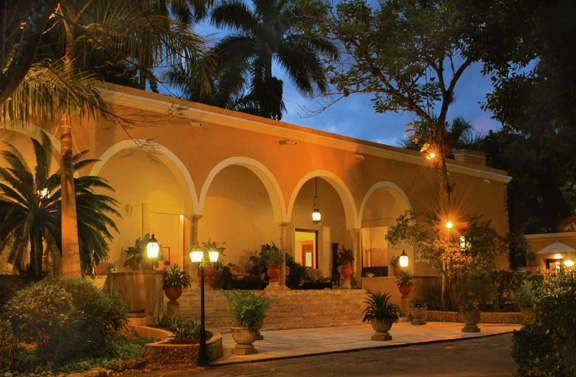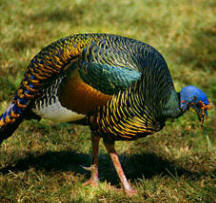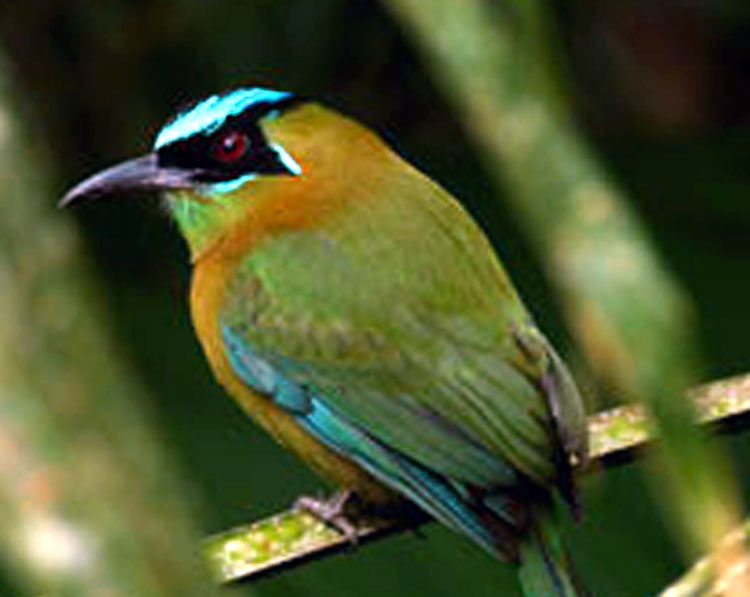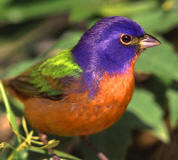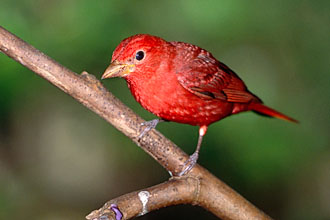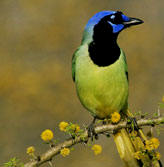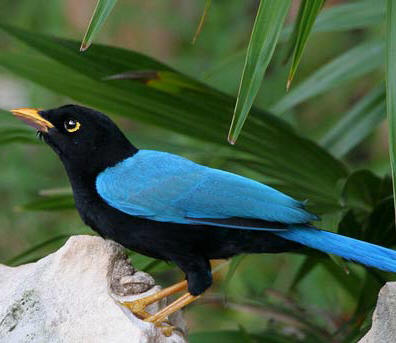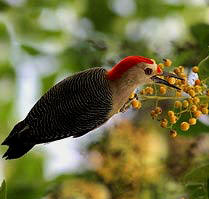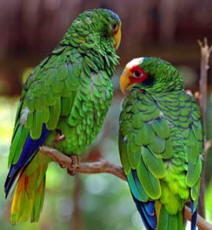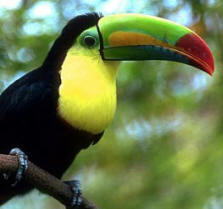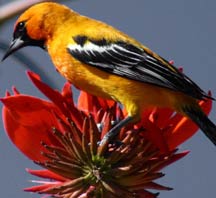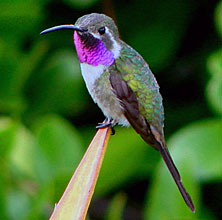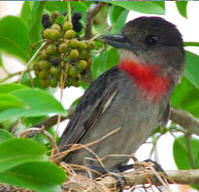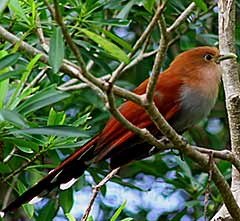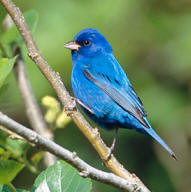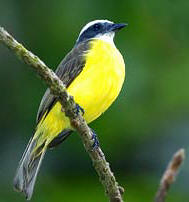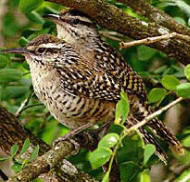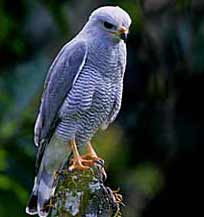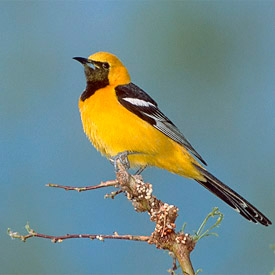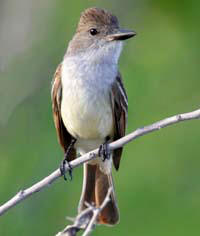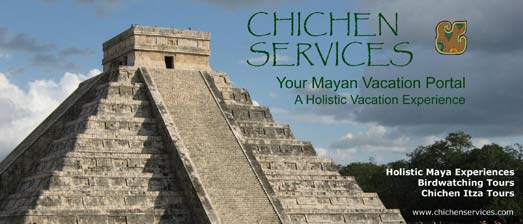Birding in Yucatan at Hacienda Chichen is quite a joy, over 157 wild bird species are found in this green hotel's Bird Refuge and gardens. Birding for any guest as well as for true professional birders is very rewarding; for photographers this is truly a wonderful opportunity to shoot great photos. Also if you are an amateur birder, you can booked a Mayan Local Bird-watching guided tour with one of our Maya local guides who help birders indentify birds as well as Mayan medicinal plants during the 90 minutes bird nature guided tour, offered at Hacienda Chichen, Chichen Itza, Yucatan.
At Hacienda Chichen gardens and Bird Refuge bird-watching is one of the highlights moments of most guests visiting this magnificent Mayan region. For Yucatan birding activities and birding tours in the Yucatan, please contact Chichen Services via email: info@chichenservices.com or visit www.chichenservices.com to find which Nature and Birding Vacation Package is best for you!
Hacienda Chichen Resort's own Yucatan Bird List - bird groups you will find in this great sustainable eco-cultural destination, for further detail click name:
ANIS AND CUCKOOS:
Ani Groove-billed, Crotophaga sulcirostris ( Chic Bul in Maya)
Squirrel Cuckoo, Piaya cayana (Kip Cho in Maya)
BUNTING BIRDS:
Blue Bunting, Cyanocompsa perellina
Indigo Bunting, Passerina cyanea, Cardinalidae family
Painted Bunting, Passerina ciris
CARDENALS AND GROSBEAKS: view the following birds' photos and info here
Blue Grosbeak, Guiraca caerulea.
Black-headed Saltator, Saltator coerulescens.
Grayish Saltator, Saltator coerulescens
Northern Cardinal, Cardinalis cardinalis.
Rose-breasted grosbeak, Pheucticus ludovicianus.
CURRASOWS and GUANS:
Plain chachalaca, Ortalis vetula (Baach in Maya)
DOVES and PIGEONS: view the following doves / pigeons' photos and info here
Caribbean dove, Leptotila jamaicensis
Common ground dove, Columbina passerine
Mouring dove, Zwnaida macroura
Red-billed pigeon, Patagioenas flavirostris
Rock pigeon, Columba livia
Ruddy ground-dove, Columbina talpacoti (Chak Mucuy in Maya)
White tipped dove, Leptotila verreauxi
White winged dove, Zenaida asiatica
EGRET:
Cattle Egret, Bubulcus ibis
EUPHONIA and FINCH BIRDS
Lesser Goldfinch, Carduelis psaltria.
Scrub Euphonia, Euphonia affinis
Yellow-throated Euphonia, Euphonia hirundinacea
FALCONS AND CARACARAS:
American Kestrel, Falco sparverius
Bat Falcon, Falco rufigularis
Collared Forest Falcon, Micrastur semitorquatus
Crested Caracara, Caracara cheriway
Laughing Falcon, Herpetotheres cachinnans (Kos in Maya)
Peregrine Falcon, Falco peregrinus
FLYCATCHER and ANTBIRDS: view the following flycatchers' photos and info here
Barred antshrike, Thamnophilus doliatus
Boat-billed flycatcher, Megarynchus pitangus - X'takay in Maya – (see flycatchers)
Bright-rumped attila, Attila spadiceus
Brown-crested flycatcher, Myiarchus crinitus
Yellow-billed cacique, Amblycercus holoseiceus (Pi’ich in Maya)
Couch’s kingbird, tyranuus couchii
Dusky-capped flycatcher, Myiarchus tuberculifer
Eastern Wood-Pewee, Contopus virens
Great crested flycatcher, Myiarchus crinitus
Great Kiskadee, Pitangus sulphuratus, ( X'takay in Maya all similar birds in colors)
Greenish Elaenia, Myiopagis viridicata
Least flycatcher, Empidonax minimus
Northern Bentbill, Oncostoma cinereigulare
Social flycatcher, Myiazetetes similis (X'takay in Maya for all similar birds in colors) Sulphur-bellied flycatcher, Myodynastes luteiventris
Tropical Pewee, Contopus cinereus
Tropical Kingbird, melancholius (X'takay in Maya)
Yellow-bellied elaenia, Elaenia flavogaster
Yellow-bellied flycatcher, Empidonax flaviventris
Yellow-olive flycatcher, Tolmonyias sulphurescens
Yucatan flycatcher, Myiarchus yucatanensis – endemic. (X'takay in Maya)
GALLIFORMS:
Yucatan bobwhite or Black-throated bobwhite,Colinus nigrogularis, "Bech" in Maya.
GRACKLES and COWBIRDS:
Common grackle, Quiscalus
Great tail grackle, Quiscalus mexicanus (X'Kau in Maya)
Bronzed cowbird or Red-eyed cowbird, Molothrus aeneus
GNATCATCHERS:
Blue-gray gnatcatcher, Polioptila caerulea
White-lored gnatcatcher, Polioptila albiloris
GRASSQUITS:
Blue-black grassquit, Volatinia jacarina
White-collared seedeater, Sporophila torqueola
Yellow-faced grassquit, Tiaris olivacea
HAWKS and GOATSUCKER BIRDS:
Common Nighthawk, Chordeiles minor
Chuck-will’s-widow, Caprimulgus carolinensis
Gray Hawk, Asturina nitida, (Yoksadz in Maya)
Lesser Nighthawk, Chordeiles acutipennis
Pigeon Hawk, Falco Columbarius
Roadside Hawk, Buteo Magnirostris
Short-tailed Hawk, Buteo albonotatus
White Hawk, Leucoptemis albicollis
Yucatan Poorwill, Nyctiphrynus yucatanicus – see Yucatan endemic birds
Zone-tailed Hawk, Buteo albonotatus
HUMMINGBIRDS:
Buff-bellied Hummingbird, Amazilla yucatanensis - Dzunum in Maya
Canivet’s Emerald hummingbird, Chlorostibon canivetii
Cinnamon hummingbird, , Amazilla rutila
Emerald-chinned hummingbird, Abeillia abeillei
Green breasted mango, Anthracothorax prevostii (Dzunum in Maya)
Mexican sheartail, Dorich eliza, Dzunum" in Maya - see humming birds
Ruby-throated hummingbird, Archilochus colubris, (Dzunum in Maya all hummingbirds)
White-bellied Emerald hummingbird, Amazilia candida
Wedge-tailed sabrewing, Campylopterus curvipennis
JAY BIRDS:
Brown Jay, Psilorhinus morio
Green Jay, Cyanocorax yncas
Yucatan Jay, Cyanocorax yucatanicus, endemic.
MOCKINGBIRDS:
Gray Catbird, DuMetella Carolinensis(Box Chika' in Maya)
Tropical Mockingbird, Mimus gilvus
MOTMOTS: view the following Motmot birds' photos and info here
Blue crowned motmot, Momotus momota, (Toh in Maya)
Turquoise-browed motmot, Eumomota superciliosa, (also Toh in Maya)
ORIOLE BIRDS: view the following Oriole birds' photos and info here
Altamira oriole, Icterus gularis ( Yuyum in Maya)
Baltimore oriole, Icterus galbula (Chel in Maya same as many orioles)
Black-Cowled oriole, Icterus Dominicensis ssp. prosthemelas
Hooded oriole, Icterus Cucullatus, ( Yuyum in Maya, same as many orioles )
Melodious black-bird, Dives dives ( Pich in Maya )
Orange oriole, Icterus auratus, (" yuyum" in Maya) endemic.
Orchard oriole, Icterus spurius
Yellow-backed oriole ( Chel in Maya, same all yellow orioles )
Yellow-tailed oriole ( Chel in Maya, same all yellow orioles )
OWL BIRDS:
Barn owl, Tyto alba ( Xoch' in Maya)
Ferruginious pygmy owl, Glaucidium brasilianum ( X;nuk in Maya)
Great Horned owl, Bubo virginianus
Mottled owl, Ciccaba virgata
QUAILS:
Black-throated bobwhite, Colinus nigrogularis, "Bech" in Maya.
Yucatan Quail, Colinus virginianus
PARROTS:
Olive-throated parakeet, Aratinga nana
White-fronted parrot, Amazona Albifrons
Yucatan parrot or Yellow lored, Amazona xantholora, (T’uut in Maya)
PLOVERS:
Killdeer, Charadrius vociferus,rare
ROADRUNNERS:
Lesser roadrunner, Geococcyx velox – restricted island population to N.Yucatan
SPARROWS:
Olive sparrow, Arremmonops rufivirgatus
SWALLOWS:
Barn swallow, Hirundo rustica
Cave swallow, Petrochelidon fulva
Cliff swallow, Petrochelidon pyrrhonota
Northern rough-winged swallow, Stelgidopteryx serripennis
Purple Martin, Progne subis
Ridgway’s rough-winged swallow, Stelgidopteryx ridgway - "Cutzam" in Maya.
Tree swallow, Tachycineta bicolor
SWIFTS:
Rufous-breasted Spinetail Synallaxis erythrothorax
Vaux’s Swift, Chaetura vauxi
TANAGERS:
Blue-gray tanager, Thraupis episcopus
Gray-headed tanager, Eucometis penicillata
Red-throated ant-tanager, Habia fuscicauda
Red-legged honeycreeper, Cyanerpes cyaneus
Rose-throated tanager, Piranga roseogularis – rare to observe
Scarlet tanager, Piranga Olivacea
Summer tanager, Pirunga rubra
Western tanager, Piranga ludoviciana
Yellow-winged tanager, Thraupis abbas
THRUSES:
Clay colored robin, Turdus greyi, ( X'Kok in Maya )
Gray-cheeked thrush, Turdus
Louisiana waterthush, Seiurus motacilla
Pulple martins, Progne subisr (see wood thrushes)
Swainson’s thrush, Catharus ustulatus
Wood thrush, Hylocichla mustelina
TINAMOUS:
Thicket Tinamou, Crypturellus cinnamomeus
TITYRAS and BACARD:
Black crowned tityra, Tityra inquisitor (Pelan K'euel in Maya)
Mask tityra, Tityra semifasciata, (Pelan K'euel in Maya)
Rose-throated bacard, Piranga roseogularis.
TOUCANS:
Collared Aracari, Pteroglossus torquatus
Toucan, Keel-billed, Ramphastos sufuratus
TURKEY:
Ocellated Turkey, Meleagris ocellata – endemic species
TROGONS:
Black-headed Trogon, Trogon Melanocephalus.
Violaceus trogon, Trogon violaceus
VULTURES:
American Black vulture, Coragyps atratus
Turkey vulture, Cathartes aura
VIREO BIRDS:
Lesser greenlet. vireo, Hylophilus decurtatus
Mangrove vireo, Vireo pallens
Red-eyed vireo, Vireo olivaceus
Rufous-browed peppershike, Cyclarhis gujanensis
Warbling vireo, Vireo gilvus
White-eyed vireo, Vireo griseus,
Yellow-green vireo, Vireo flavoviridis,
Yellow-throated vireo, Vireo flavifrons
Yucatan vireo, Vireo magister,
WARBLER BIRDS:
American redstart warbler, Setophaga ruticilla
Bay-breasted warbler, Dendroic castaneaa
Blue-winged warbler, Vermivora pinus
Black-and-white warbler, Mniotilta varia
Blackpoll warbler, Dendroica straita
Black-throated blue warbler, Dendroica caerulescens
Black-throated green warbler, Dendroica virens
Black and white warbler, Mniotita varia
Cape May warbler, Dendroica tigrina
Cerulean warbler, Dendroica cerulea
Chestnut-sided warbler, Dendroica pensylvanica
Common yellowthroat warbler, Geothlypis trichas
Kentucky warbler, Oporomis formosus
Louisiana waterthush, Seiurus motacilla
Gray-crowned yellow-throat, Geothlypis poliocephala
Hooded warbler, Wilsonia citrina
Magnolia warbler, Dendroica magnolia
Northern Parula, Perula americana
Northern waterthrush warbler, Parkesia noveboracensis
Ovenbird warbler, Seiurus aurocapillus
Palm warbler, Dendroica palmarum
Prairie warbler, Dendroica discolor
Prothonotary warbler, Protonotaria citrea
Tennessee warbler, Vermivora peregrina
Yellow warbler, Dendroica petechia aestiva
Yellow-breasted Chat, Icteria virens
Yellow-rumped warbler, Dendroica coronata
Yellow-throated warbler, Dendroica dominica,
WAXWINGS:
Cedar waxwing, Bombycilla cedrorum
WOODPECKER and WOODCREEPER BIRDS:
Ivory-billed woodcreeper, Xiphorhynchus flavigaster
Golden-fronted woodpecker, Centurus aurifrons
Golden olive woodpecker, Piculus Rubiginodud
Ladder-backed woodpecker, Picoides scalaris
Lineated woodpecker, Dryocopus lineatus (all woodpeckers are Colonte in Maya)
Pale-billed woodpecker, Campephilus guatemalensis
Olivaceous woodcreeper, Sittasomus griseicapillus
Ruddy woodcreeper, Dendrocincla homochroa
Yellow-bellied sapsucker, Spyrapicus varius
Yucatan woodpecker, Melanerpes pygmaeus
WRENS:
Carolina wren, thryothorus ludovicianus
House wren, Troplodytes aedon
Spot-breasted wren, Thryothorus maculipectus
Southern house wren, Troglodytes aedon
White-browed wren, thryothorus albinucha
White-bellied wren, Uropsila leucogastra
Yucatan wren, Campylorhynchus yucatanicus, called " Yan coti" in Maya.
YUCATAN ENDEMIC BIRDS: Some general names but look also for bird groups:
Mexican sheartail, Dorich eliza, endemic emerald green humming bird, "Dzunum" in Maya.
Ocellated Turkey, Meleagris ocellata – endemic species
Yucatan bobwhite, Colinus nigrogularis, "Bech" in Maya.
Yucatan flycatcher, Myiarchus yucatanesis, known in Maya as a " X'takay "
Yucatan Jay, Cyanocorax yucatanicus, endemic.
Yucatan night-jar, Caprimulgus badius, called "Box Pujuy" in Maya. (see jays)
Yucatan parrot or Yellow lored, Amazona xantholora, (T’uut in Maya)
Yucatan poorwill, Nyctiphrynus yucatanius, called "Chac Pujuy" in Maya.
Yucatan Quail, Colinus virginianus
Yucatan vireo, Vireo magister, (see verios)
Yucatan woodpecker, Amazilla
Yucatan wren, Campylorhynchus yucatanicus, called " Yan coti" in Maya.
The above Hacienda Chichen Bird List features birds observed by Barbara MacKinnon, Belisa B. Gordon, and Jim Conrad, the hotel’s naturalist / forest expert. The total list of birds found in the Yucatan Peninsula contains a surprisingly high percentage of endemic birds species (see above) that worldwide are only found in the Yucatan. Barbara Mackinnon has recorded and listed 14 endemic species and about 100 subspecies.
The reason for so many Yucatan endemics bird species can be easy understand: Unique species tend to evolve on islands where gene flow from surrounding populations is cut off, allowing island-bound birds to evolve to their own local conditions. The Yucatan Peninsula is an "ecological island." It is surrounded by water in the east, west and north, and, in the south, the moist, lush forests and marshes found there are ecologically very different from the arid north. To Yucatan birds adapted to dry, scrubby environments, the tall, humid forests of the south are nothing less than ecological walls.
About 50% of all of Mexico's bird species are found in the Yucatan Peninsula, with 58% of all North American birds found here. 128 bird species, or so, from North America regularly overwinter in the Yucatan; while some 54 bird species pass through the Yucatan during spring and/or fall migration, nesting many times in the peninsula or farther north, and overwinter here or farther south. About 58 species are considered vagrants or occasional visitors. From October to May each year is the best time to come enjoy not only Yucatan’s endemic bird species but also migratory birds. Hacienda Chichen Resort’s private Bird Refuge and Maya Jungle Reserve offers birders and all guests alike, a fantastic bird population with over 157 bird species observed during such months each year. These are some of the birds you can observe and enjoy not only in our Bird Refuge but from your own private cottage-room terrace and the hotel’s lush tropical gardens.
There are a hundred or so of non-endemic bird species also observed as regular residents at the Bird Refuge at Hacienda Chichen Bird Refuge Chichen Itza, Yucatan, Mexico; all of them have found in this sustainable hotel property a peaceful safe heaven to nest, breed, and enjoy a natural safe habitat. Guests and local workers have learned to admire and protect these creatures. We wish to share Yucatan's vast animal kingdom with future generations; therefore, caring and protecting their habitat is our mission and joy.
